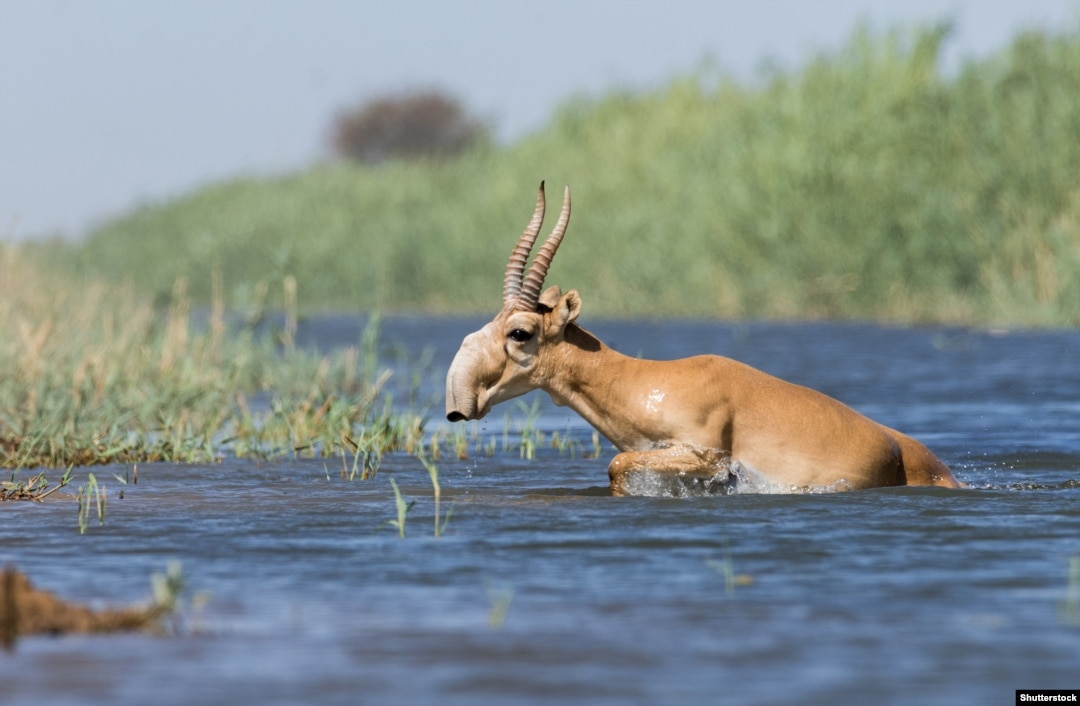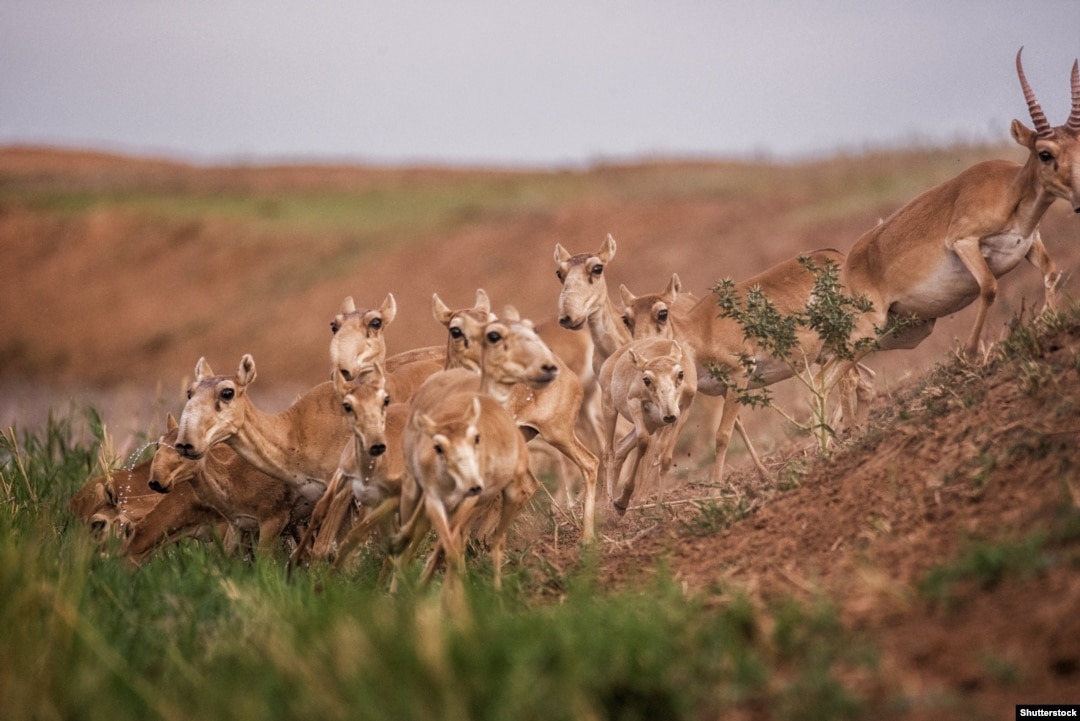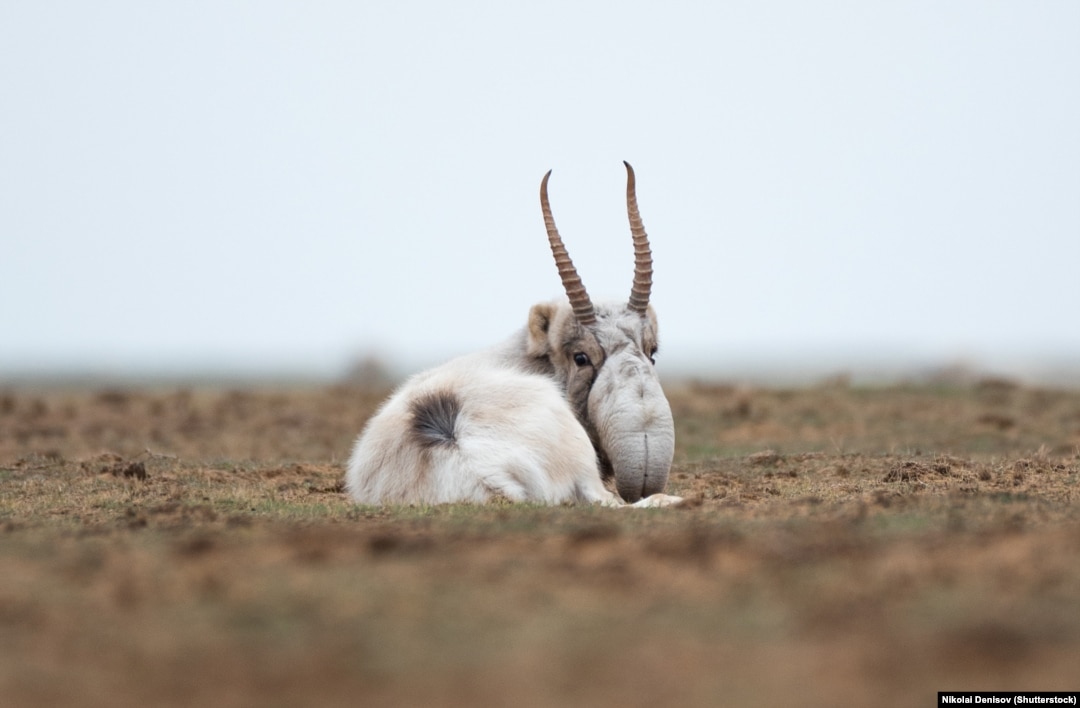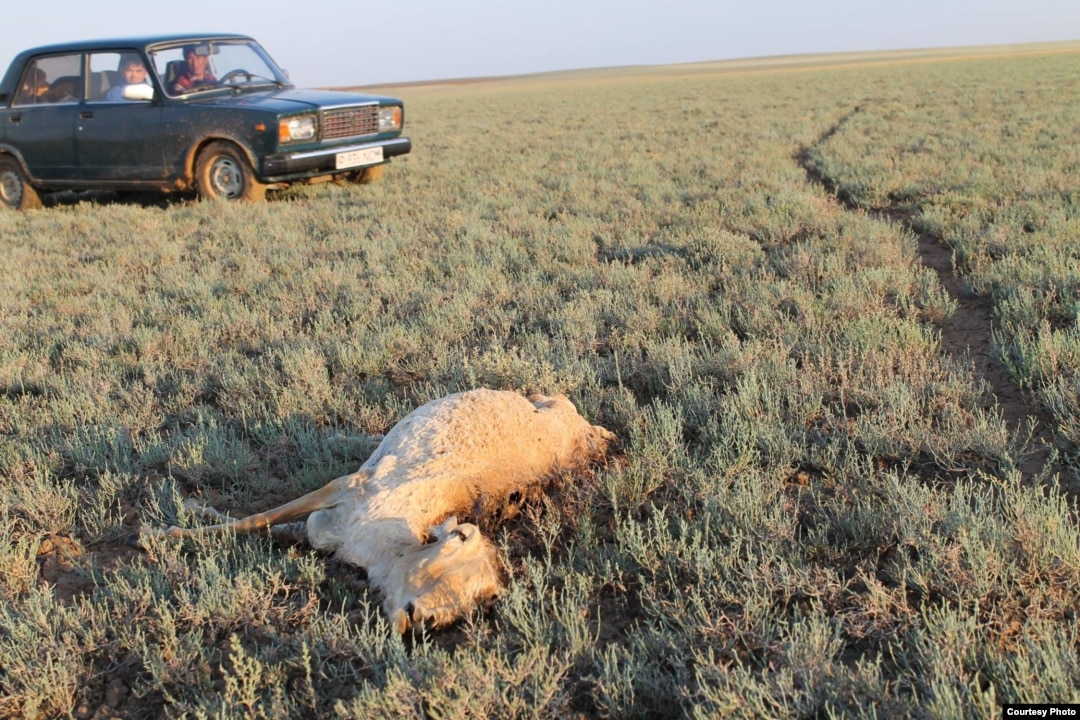Why The Long Face? Kazakhstan's Saiga Antelope

This is a male saiga antelope (you can tell by the horns).

The wobbly-nosed animals once roamed a vast region that extended from Asia all the way west to Europe. Today the antelope can be spotted in Russia and Mongolia, but most live in Kazakhstan.

Researchers believe the animals’ Alf-like noses have evolved to help them filter out dust as they pant through summer and warm the brutally cold air they breath during the region’s winters.

The animals’ numbers have surged and plunged dramatically. In the 1920s, the saiga were hunted to the edge of extinction before Soviet authorities enacted laws to limit saiga hunting. In 2015, in the space of just a few weeks, a bacterial plague wiped out 220,000 of the animals -- 62 percent of the world’s population at the time.
But numbers have since rebounded. A 2019 survey of the animals in Kazakhstan found their numbers had jumped from 152,000 to 334,000 within two years.
But a continuous threat is driven largely by Chinese demand for the male saiga’s antlers.
Saiga-horn contraband seized by the Hong Kong government. Saiga-horn “detox” products are highly popular in China. A 2018 survey of Chinese Singaporeans found 13 percent had knocked back some form of saiga-based “medicine” in the past year.
This makes Saiga rangers -- tasked with protecting the otherworldy animals -- critical to their survival. But in Kazakhstan, this job has become increasingly dangerous.
In January 2019, ranger Erlan Nurghaliev (pictured) and a colleague chased a car of saiga poachers through the Kazakh wilderness. After a confrontation, one of the three poachers smashed Nurghaliev in the head with his rifle butt. The ranger died two days later.
On the night of July 23, another Kazakh ranger was killed. When Kanysh Nurtazinov and a colleague gave chase to a saiga poacher attempting to flee through the darkness, the poacher allegedly shot back at the ranger’s car, fatally striking Nurtazinov. The 43-year-old left behind a wife and four children.

